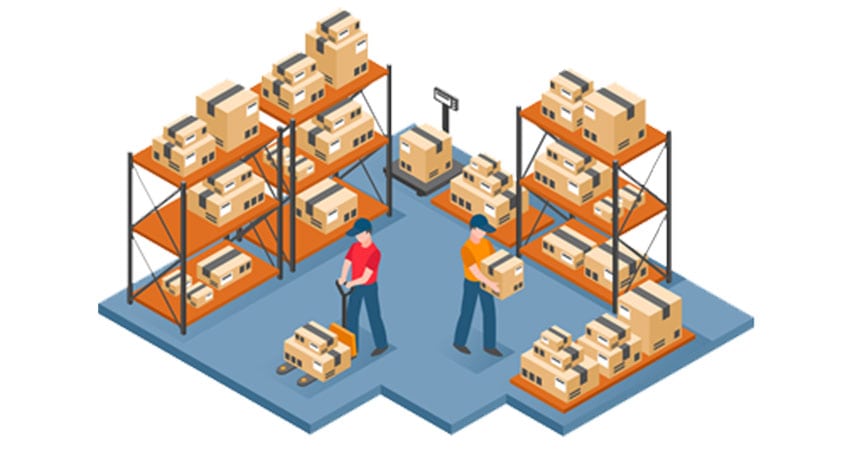As retailers grow, so do their operational complexities – additional SKUs and greater demand for product lead to increased pressures for pickers and packers. Unfortunately, there’s no “one-size-fits-all” answer for these challenges.
Retailers have two options: Invest in expansion or outsource operations to a third-party logistics provider (3PL). Each has its pros and cons. With in-house management, retailers retain total control over their distribution processes. However, a 3PL may have access to logistics software that would otherwise be too expensive to obtain. Also, outsourcing to a 3PL frees retailers to focus other areas of the business.
The global 3PL industry’s expected worth of nearly $1 trillion by 2020 would suggest that more retailers are choosing outsourced fulfillment. Ultimately, you’ll need to consider a number of factors when deciding what’s right for you. At a high level, ask yourself: Is my product/team a fit for in-house logistics management? Do I have the tools I need to meet customer demand? For our team, what are the costs/benefits for a 3PL?
Is my Product and Team a Fit for In House?
Start by considering your product specifications – namely the package. Does your product require minimal packaging or does it demand a more complex packaging procedure? Can it be prepared inexpensively in bulk quantities? If an intricate package is part of your product’s appeal, it may be worth keeping production in house. If not, or if it can be quickly produced in large quantities, a 3PL may be a more cost-effective option.
You should also factor in your employees’ skill levels. Do they have the specialized knowledge necessary to develop more efficient processes? Is your COO ready to manage a lean/Six Sigma initiative? If so, you may be able to launch a warehouse expansion without neglecting day-to-day tasks. If you have a smaller staff or your executive team lacks the necessary experience, a 3PL may be the better option.
Do I Have the Right Technology in Place?
Your warehouse operations software plays a key role in keeping fulfillment in house, especially as demand grows. Manual record-keeping for pick, pack and ship processes may be sustainable for young retailers, but the complexities of high-volume shipping require warehouses to either adopt advanced warehouse management technology or outsource to a 3PL.
A cloud-based warehouse management system empowers retailers to maintain control over fulfillment. Because a WMS captures data from inventory put-away to shipping, users have the numbers they need to determine process pain points and counteract them. If your warehouse is operating at maximum efficiency, you may not need a 3PL’s assistance.
Cost vs. Benefits of a 3PL
Your company’s growth rate plays a key role in determining 3PL cost. If you’re a startup with a single warehouse, growth will involve a substantial investment, including extra equipment and labor, more distribution center space and higher utility bills, to start. In this instance a 3PL could make expansion more affordable. But if you’re established and don’t expect significant growth, youF may be able to adjust processes in house and reach your efficiency goals.
You’ll also need to consider whether you’re willing to trust fulfillment with an organization you do not manage. The right 3PL will maintain highly efficient processes, but you’ll likely pay more for a highly-rated 3PL. They’re responsible for your brand’s reputation. The customer never sees the 3PL so if they receive an incorrect item in a package with your name on it, you receive the blame. The best option is to obtain a client list and check references. If you call a few clients and they rave about the 3PL, it’s a good bet you’ve found the right fit.
Finally, if you decide to outsource fulfillment, keep a close eye on the 3PL contract. Ensure that it guarantees you the highest, most efficient service. Check for preferences that might put you at odds with your provider – for example, your shipping carrier – and discuss any differences before signing. You’ll also need to determine how often your provider sends updates and reports.
3PL or In House? It Depends
In-house fulfillment is great for some companies, while 3PLs will be the right choice for others. What works for a startup looking to expand without purchasing new equipment is different than what makes sense for an established business looking to streamline processes.
Before you choose a 3PL or invest in new property, take stock of what’s holding your business back and how much you’re willing to spend to fix the issue. Let your research guide you to the best option.
Kirk Anderson is Executive Vice President at Snapfulfil North America

